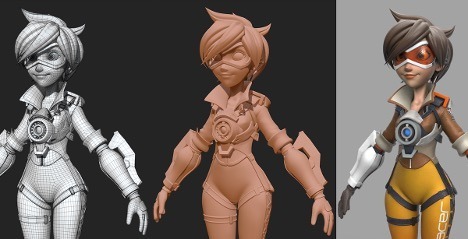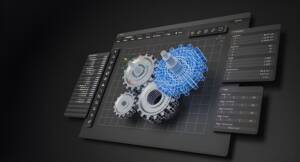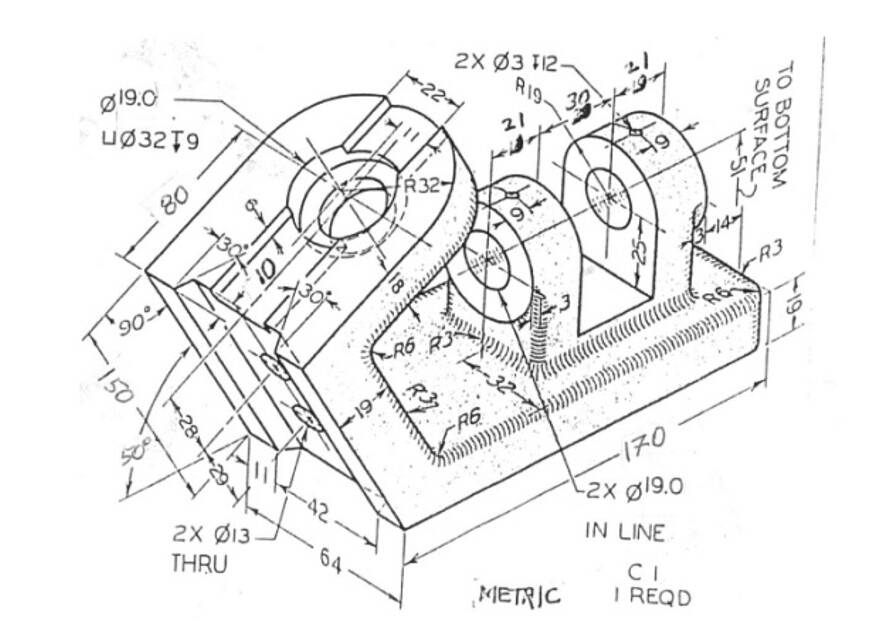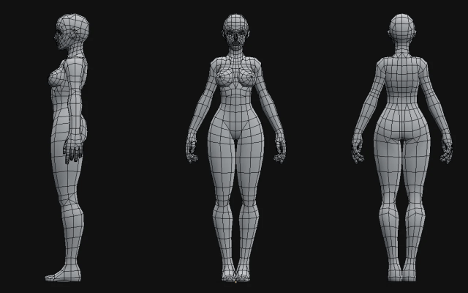
In the world of drawing, organic and technical drawing represent two different approaches. Both types of drawing have their own unique methods, techniques, and areas of application, forming the fundamental elements of digital design. While organic drawing focuses more on creating natural and free forms, technical drawing is a type of drawing essential for engineering and industrial design, prioritizing functionality and accuracy. In this blog post, we will explore the differences between organic and technical drawing, and how each approach is used in the digital world.
What is Organic Drawing?
Organic drawing is a type of drawing focused on creating natural and free-flowing forms. In this type of drawing, curvy and asymmetrical structures like irregular shapes found in nature, the human body, plants, animals, or fantastical forms take the spotlight. Organic drawing is commonly used in artistic projects, films, animations, or game design. This type of drawing offers unlimited creativity and allows for artistic freedom of expression.
Key Features of Organic Drawing:
- Natural and Fluid Forms: Instead of symmetric and straight lines, organic drawing uses curvy, flowing, and irregular forms commonly found in nature.
- Freedom and Creativity: Organic drawings are shaped based on the designer’s imagination, without adhering to strict rules. This offers a broad scope for character design, natural landscapes, or abstract objects.
- Focus on Details: Organic drawings often emphasize fine details, such as surface textures, muscle structures, plant leaves, or animal fur. This type of drawing allows for the modeling of complex details.
- Movement and Flow: Organic drawings frequently include structures that simulate movement and flow, reflecting the dynamic nature of natural elements or living organisms.
What is Technical Drawing?
Technical drawing is a type of drawing used in engineering, architecture, and industrial design, prioritizing accuracy and functionality. In technical drawings, symmetry, scale, and geometric precision are key. These drawings provide detailed information on how products, structures, or machines will be produced and constructed. Every step of the design must be measurable and based on reality.
Key Features of Technical Drawing:
- Accuracy and Measurability: Every line, angle, and form in technical drawings is created according to a specific scale, ensuring that the design can be accurately implemented in the physical world.
- Geometric and Symmetrical Forms: Technical drawing revolves around straight lines, sharp corners, and specific geometric shapes. Symmetry and order are essential in this type of drawing.
- Functionality: Technical drawings are made to explain how an object or structure works. Strict rules and standards are followed to clearly demonstrate functionality.
- Use of Tools: Technical drawings are often supported by precision tools like rulers, compasses, and templates. These tools help ensure that the designs are accurate and true to reality.
Differences Between Organic and Technical Drawing
1. Creativity and Freedom
- Organic Drawing: Has a more free, creative, and artistic approach. Forms are shaped according to their natural flow without adhering to strict rules. Designers can manage the creation process entirely based on their imagination.
- Technical Drawing: Accuracy and precision take precedence. Drawings are created within specific rules and standards. Instead of freedom, measurements and technical details are prioritized in the design process.
2. Forms and Shapes
- Organic Drawing: Irregular and asymmetrical forms found in nature are used in organic drawings. These forms are shaped around natural structures like the human body, plants, and animals.
- Technical Drawing: Symmetrical and regular geometric shapes are the foundation of technical drawing. Clear and precise forms such as straight lines, circles, rectangles, and triangles are used.
3. Areas of Application
- Organic Drawing: Primarily used in fields like art, animation, game design, and digital sculpting. Designers create characters, natural scenes, or fantastical worlds using organic forms.
- Technical Drawing: Used in fields like engineering, architecture, and industrial design. It is used to show how buildings, machines, mechanical parts, or circuits will be constructed or manufactured.
4. Precision and Scale
- Organic Drawing: Generally does not require scale or measurement. Designs are created more freely, with aesthetics prioritized over accurate measurements.
- Technical Drawing: Every drawing is based on a specific scale and measurement. Precise dimensions and ratios are used to ensure that the drawings are suitable for the production or construction process.
How Organic and Technical Drawing Complement Each Other
Despite the clear differences between organic and technical drawing, these two approaches often complement each other in many projects. Especially in industrial design and product development processes, a product needs to be both aesthetically appealing and functional. Organic drawing enhances the creative and aesthetic aspect of the product, while technical drawing determines how the product will be manufactured and function. For example, in car design, the exterior form and aesthetic details are done through organic drawing, while the internal mechanics and engineering details are created using technical drawing.
Conclusion: The Power of Two Worlds
Organic and technical drawing serve different goals in the world of digital design. Organic drawing emphasizes creativity and art, while technical drawing focuses on functionality and accuracy. Both types of drawing are indispensable in their fields and are often used together in modern design processes. Designers and engineers can achieve excellent results, both aesthetically and functionally, by combining both approaches in their projects.

This meeting point of creativity and engineering will continue to shape the evolution of the digital design world.



